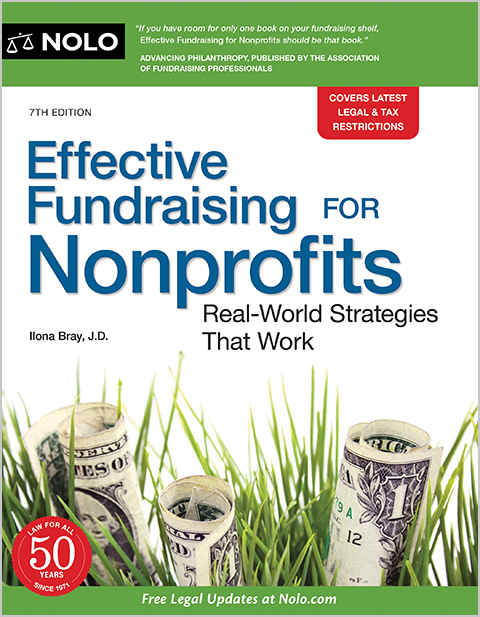Nonprofit Agency: Professional Providers to Assistance Your Goal and Goals
Nonprofit Agency: Professional Providers to Assistance Your Goal and Goals
Blog Article
The Role of Community Engagement in Nonprofit Fundraising: Building Lasting Relationships for Sustainable Assistance
Neighborhood engagement is increasingly recognized as a vital component of effective not-for-profit fundraising. By fostering authentic connections with local stakeholders, companies can cultivate count on and loyalty, which are crucial for sustainable support. However, the techniques and strategies used to engage neighborhoods vary widely, increasing important inquiries concerning efficiency and influence. What are the very best techniques for growing these vital connections, and how can nonprofits determine their success in this field? Recognizing these dynamics might considerably influence the future of fundraising initiatives and the total mission of nonprofit companies.
Recognizing Community Engagement
Neighborhood involvement is an important part of effective nonprofit fundraising efforts. It refers to the approaches and tasks that organizations use to get in touch with their regional neighborhoods, cultivating partnerships that are mutually useful. Recognizing neighborhood interaction entails acknowledging its diverse nature, that includes cooperation, engagement, and outreach. Nonprofits need to determine crucial stakeholders-- such as neighborhood members, neighborhood businesses, and various other companies-- to develop effective involvement approaches.
Effective neighborhood interaction is asserted on energetic listening and responsiveness to the requirements and rate of interests of the neighborhood. This process includes soliciting feedback, understanding area dynamics, and ensuring that the company's goal aligns with neighborhood concerns. Engaging the community can take numerous forms, including public conferences, volunteer opportunities, and collaboration initiatives, each designed to motivate participation and investment in the company's goals.
Furthermore, neighborhood engagement should be come close to as a continuous discussion as opposed to a single effort. By cultivating an inclusive atmosphere where area voices are heard and valued, nonprofits can construct a strong foundation for future fundraising undertakings. Ultimately, a deep understanding of area engagement equips companies to produce genuine connections that improve their total performance and sustainability.
Advantages of Solid Relationships
Solid relationships developed through neighborhood involvement yield various advantages for nonprofit fundraising efforts. First and primary, these connections foster trust and integrity, important elements in motivating benefactors to contribute. When prospective fans see a nonprofit actively associated with their neighborhood, they are more probable to rely on its objective and effect.

In addition, these partnerships help with efficient communication. Nonprofits can leverage their links to share stories of effect, updates, and requires, making certain that advocates continue to be educated and involved. This open line of communication not only enhances bonds however additionally motivates word-of-mouth promo, broadening the not-for-profit's reach.
Last but not least, strong area ties can draw in new partners and enrollers. Individuals and companies are extra inclined to line up with organizations that demonstrate purposeful community involvement, providing extra resources and assistance that can considerably enhance fundraising abilities. Hence, growing durable relationships with area interaction is integral to a nonprofit's long-lasting fundraising success.
Approaches for Reliable Engagement
Exactly how can nonprofits effectively involve their neighborhoods to improve fundraising efforts? Establishing targeted techniques is vital for promoting significant connections. Initially, leveraging social media platforms enables organizations to share their mission dynamically and interactively, reaching a wider audience. Regular updates, engaging content, and calls-to-action can galvanize area rate of interest and involvement.
Second, hosting community events, such as workshops, volunteer opportunities, or fundraising drives, facilitates in person interaction, permitting nonprofits to showcase their influence and efforts. These events not just elevate funds however likewise cultivate connections and allow area participants to involve directly with the cause.
Third, implementing personalized communication methods can boost involvement. Customizing messages to specific donor segments based upon interests and previous payments cultivates a sense of belonging and financial investment in the organization's mission.
Finally, producing partnerships with neighborhood companies and neighborhood leaders can amplify outreach efforts. Joint initiatives can boost visibility and credibility, demonstrating a cumulative dedication to the area's health. By integrating these approaches, nonprofits can construct long-term relationships that enhance fundraising initiatives and drive sustainable assistance.
Measuring Interaction Success
While involving the community is critical for successful not-for-profit fundraising, gauging the effectiveness of these involvement efforts is just as important. Establishing clear metrics enables organizations to analyze how well they are attaching with their audience and accomplishing their fundraising goals. Key performance signs (KPIs) such as contributor retention rates, volunteer involvement degrees, and involvement on social media sites platforms provide concrete information for evaluation.

Regularly assessing these metrics allows companies to pivot their methods when required, guaranteeing that community interaction continues to be straightened with their general mission. In addition, sharing these outcomes with stakeholders cultivates transparency and builds depend on, encouraging more area participation. Eventually, a durable measurement structure not just educates future fundraising initiatives yet also reinforces the relationship between the nonprofit and its advocates, preparing for sustainable success.
Instance Studies in Community Impact
Numerous study show the extensive impact that neighborhood involvement can carry nonprofit fundraising success. One significant instance is the "Food for Thought" effort, where a local food bank partnered with businesses and institutions to host neighborhood dinners. These events not only increased funds yet likewise fostered a sense of belonging among individuals, substantially boosting donor retention rates.
One more compelling situation is the "Environment-friendly Spaces Job," which included neighborhood citizens in the revitalization of metropolitan parks. This initiative not only gathered monetary assistance from neighborhood services but also cultivated a volunteer base that added to ongoing upkeep and programming. The feeling of ownership and satisfaction amongst neighborhood participants converted right into continual payments.
In the realm of arts, the "Art for All" campaign successfully involved local musicians and customers to produce collective art setups, causing enhanced presence and contributions for a regional arts nonprofit.
These examples highlight that when nonprofits focus on area participation, they can develop long-term connections that improve fundraising efforts, making sure sustainable support and fostering a vivid community Click This Link culture. Such cases show that neighborhood interaction is not simply an approach but an important pillar of not-for-profit success.
Conclusion
To conclude, neighborhood interaction is integral to the success of not-for-profit fundraising initiatives. By cultivating strong relationships with neighborhood stakeholders, organizations improve count on and credibility, bring about enhanced donor retention and look at this now commitment. Applying efficient involvement methods and determining their impact ensures that nonprofits can flourish and adapt. Ultimately, a durable foundation of neighborhood support not only enhances fundraising possible but additionally cultivates a culture of collaboration, necessary for attaining lasting business objectives and maintaining significant influence.
Nonprofits have to identify vital stakeholders-- such as community participants, local companies, and various other companies-- to develop reliable interaction approaches.

In verdict, neighborhood involvement is important to the success of nonprofit fundraising efforts.
Report this page